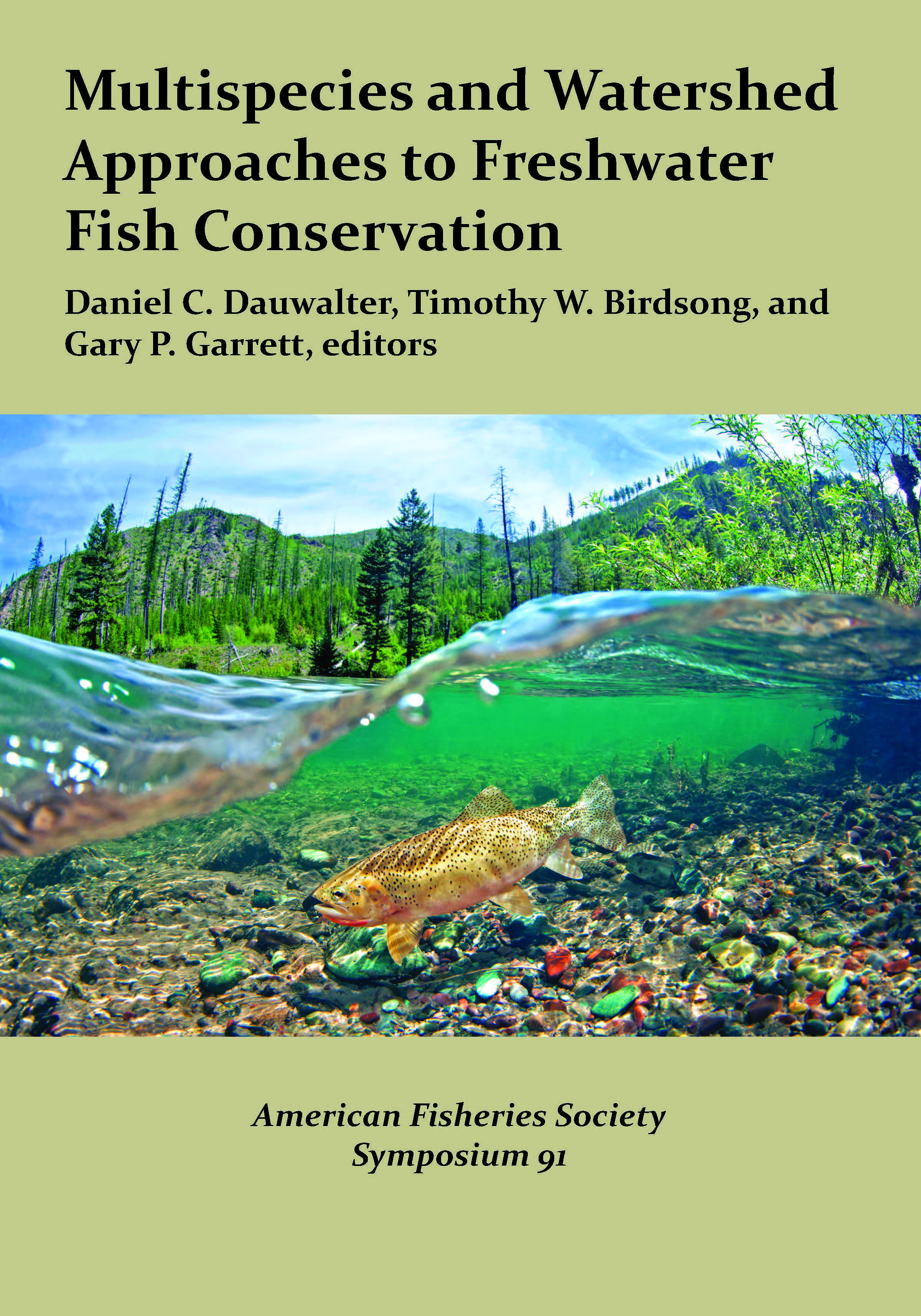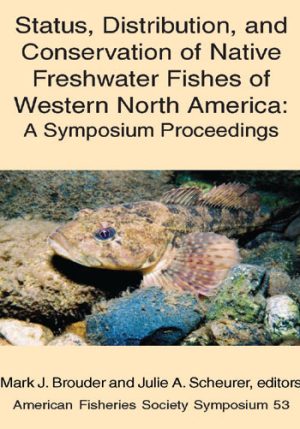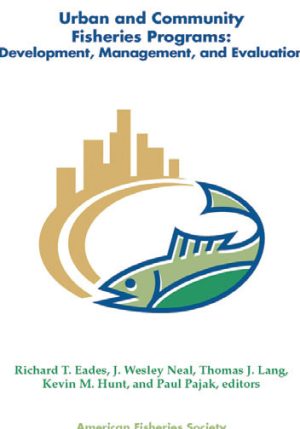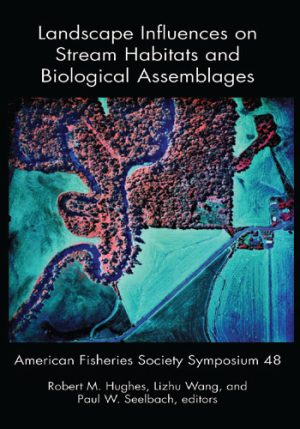Description
Daniel C. Dauwalter, Timothy W. Birdsong, and Gary P. Garrett, editors
693 pages, hardcover
Symposium #91
ISBN: 978-1-934874-57-8
Published September 2019
Click HERE for a book review
doi: https://doi.org/10.47886/9781934874578
This book is a valuable resource for those involved in conservation of freshwater fishes that seek proactive, integrated, holistic approaches to conservation of freshwater, riparian, and upland habitats. Many case studies from freshwater systems throughout the United States are profiled and they include the implementation of multispecies assessments, conservation area prioritizations, partnership-based conservation planning, and watershed-scale conservation delivery.
Freshwater systems in the United States continue to suffer substantial alterations that threaten freshwater fish diversity, habitat quality, and watershed function. Analytical approaches that integrate conservation biology, aquatic connectivity, and spatial prioritization principles to provide rigorous, science-based, and spatially explicit information to inform conservation planning and delivery can be used to reverse these trends. In addition, innovative planning approaches can yield diverse, multi-agency partnerships and large-scale funding programs that focus on initiating conservation plans and supporting meaningful and transformative conservation delivery for freshwater fishes and enhance habitat resiliency at watershed scales.
Throughout the book you will find examples of innovative conservation approaches that focus on entire aquatic communities at watershed scales while incorporating species life history needs and compatible human uses. In addition, many chapters detail the importance of conservation planning principles and predictive modeling for efficient conservation delivery that benefits the greatest number of species. Implementation of these concepts will not only help to restore and preserve native fishes and their habitats but can also increase awareness and capacity of local landowners, communities, and recreational users to act as advocates and stewards of these aquatic systems.
CONTENTS:
Preface: Multispecies and Watershed Approaches to Conservation—Thinking and Acting Holistically (Daniel C. Dauwalter, Timothy W. Birdsong, and Gary P. Garrett)
Multispecies and Watershed Conservation: Increasing Efficiency and Effectiveness for Native Fish Conservation (Jack E. Williams)
Partnering on Multispecies Aquatic Assessments to Inform Efficient Conservation Delivery (Daniel C. Dauwalter, Stephanie L. Vail-Muse, Therese Race Thompson, Joanna B. Whittier, Kevin M. Johnson, and Megan G. Bean)
The Really Big Picture for Fish Habitat: The Conceptual Underpinnings and Vision for the National Fish Habitat Partnership’s National Fish Habitat Assessment (Gary E. Whelan)
Who’s Asking? Interjurisdictional Conservation Assessment and Planning for Great Plains Fishes (Ben J. Labay, Joshuah S. Perkin, Dean A. Hendrickson, Arthur R. Cooper, Gary P. Garrett, and Timothy W. Birdsong)
Influence of Conservation Planning Methodology on Species Representation and Spatial Distribution of Priority Areas (Nicholas Sievert, Joanna B. Whittier, and Craig Paukert)
Prioritizing Hawaii’s Stream Habitats to Conserve Native Species with Changing Climate (Ralph W. Tingley III, Dana M. Infante, Wesley M. Daniel, Arthur R. Cooper, Gordon C. Smith, and Kyle Herreman)
Identification and Utility of Native Fish Conservation Areas in the Upper Snake River Basin, USA (Richard N. Williams, Daniel C. Dauwalter, Russell F. Thurow, David P. Philipp, Jack E. Williams, and Chris A. Walser)
Spatial Conservation Assessment for Balancing Avoidance of Impacts of Tilapia Introduction on Imperiled Fish Biodiversity with Economic Impacts to the Aquaculture Industry (Monica E. McGarrity)
Texas Native Fish Conservation Areas Network: Strategic Investments in Restoration and Preservation of Freshwater Fish Diversity (Timothy W. Birdsong, Gary P. Garrett, Ben J. Labay, Megan G. Bean, Preston T. Bean, John Botros, Melissa J. Casarez, Adam E. Cohen, Thomas G. Heger, Arlene Kalmbach, Dean A. Hendrickson, Stephan J. Magnelia, Kevin B. Mayes, Monica E. McGarrity, Ryan McGillicuddy, M. Melissa Parker, and Sarah Robertson)
Chihuahuan Desert Native Fish Conservation Areas: A Multispecies and Watershed Approach to Preservation of Freshwater Fish Diversity (Gary P. Garrett, Timothy W. Birdsong, Megan G. Bean, and Ben J. Labay)
Developing a Geospatial Decision Support Tool for Protecting and Restoring Environmental Flows in Texas Rivers and Streams (Johanna Valente, David Bradsby, Kevin B. Mayes, Cindy Loeffler, Lynne Hamlin, Dakus Geeslin, Kimberly Horndeski, David Young, Joe Trungale, Ryan Smith, Kyle Garmany, and Tom Hayes)
Four Decades of Conserving Native Fish in the Colorado River Watershed, Texas (Stephan J. Magnelia, Kevin B. Mayes, Megan G. Bean, Cindy L. Loeffler, and David D. Bradsby)
Developing the Science and Public Support Needed to Preserve the Devils River: A Case Study in Collaborative Conservation (Sarah Robertson, Brad D. Wolaver, Todd G. Caldwell, Timothy W. Birdsong, Ryan Smith, Thomas Hardy, Julie Lewey, and Joe Joplin)
Watershed-Scale Conservation of Native Fishes in the Brazos River Basin, Texas (Kevin B. Mayes, Gene R. Wilde, Monica E. McGarrity, Brad D. Wolaver, and Todd G. Caldwell)
Instream Flow Restoration and Watershed Conservation in the Cypress Basin, Texas (Ryan Smith, Joe Trungale, Rick Lowerre, Tom Hayes, Mike Montagne, Tim Bister, Laura-Ashley Overdyke, and Marcia Hackett)
Lessons from the Driftless Area: The Importance of Human Dimensions Research for Stream Restoration and Fisheries Management (Caroline Gottschalk Druschke and Eric G. Booth)
Incorporating Predictive Models into a Resilient Fisheries Management Framework: A Brook Trout Perspective (Eric R. Merriam, J. Todd Petty, and Cory T. Trego)
Building a Network of Partners Working to Reconnect Fragmented Streams in the Southeastern United States through Actionable Science (Jessica Graham and Kathleen Hoenke)
Little Tennessee Native Fish Conservation Partnership: Aquatic Conservation on a Landscape Scale (Andrea Leslie, Erin McCombs, and Fred Harris)
An Approach for Implementing Large-Scale Watershed Restoration Efforts: Abandoned Mine Drainage Restoration in the West Branch Susquehanna River Watershed, Pennsylvania (Shawn M. Rummel and Amy G. Wolfe)
Restoration of Diadromous Fish Populations in Tributaries of Waquoit Bay, Cape Cod, Massachusetts (Stephen T. Hurley)
Challenges and Opportunities to Apply Process-Based Restoration at Scales Appropriate to Anadromous Fishes (Kris M. Homel, Chris M. Lorion, and Benjamin J. Clemens)
New Approaches to Providing Streamflow for Fisheries in the American West: Embracing Prior Appropriation and the Marketplace (Rob Van Kirk, Brandon Hoffner, Amy Verbeten, and Scott Yates)
The Weber River Partnership: How Fish Gained Relevance through a Recently Formed Watershed Group (Paul D. Thompson and Paul C. Burnett)
Collaboration, Commitment, and Adaptive Learning Enable Eradication of Nonnative Trout and Establishment of Native Westslope Cutthroat Trout into One-Hundred Kilometers of Cherry Creek, a Tributary to the Madison River, Montana (Patrick T. Clancey, Bradley B. Shepard, Carter G. Kruse, Scott A. Barndt, Lee Nelson, Bruce C. Roberts, and R. Beauregard Turner)
Blackfoot River Restoration: A Thirty-Year Review of a Wild Trout Conservation Endeavor (Ron Pierce, W. Ladd Knotek, Craig Podner, and Don Peters)
It’s Not Easy to Save a River (Sky Jones-Lewey)







